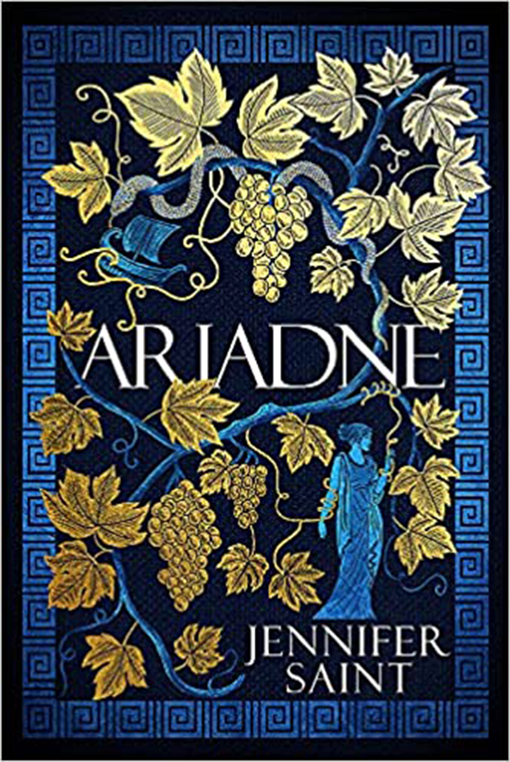
In the author's own words, this is the story of Theseus and the Minotaur told by the women who ‘made it happen’, namely the eponymous Ariadne, but also her sister Phaedra, who each contribute chapters told from their own perspectives. Arriving as it does amid a flurry of novels in recent years which have attempted to reimagine ancient myths through the eyes of female characters, it seems almost impossible to come to this book without expectations based not only on the versions of the classical myths which have come down to us from childhood stories and ancient sources, but also from the modern retellings it now sits among. In her debut novel, Saint has proved more than a match for the task and produced a work which has been diligently researched, curated and crafted, as well as being utterly compelling and surprising from beginning to end.
The novel begins in familiar territory by outlining the story of how the Minotaur came to exist, as told by his older sister Ariadne; although we are used to seeing these two figures in the same myth, it is refreshing to explore their relationship in a new light, and it is this exposure of overlooked relationships between characters which makes this retelling so effective. This is especially true when Ariadne and her sister Phaedra are separated and for the remainder of the novel we have chapters from both women, a structure which allows us to spend time with a character from mythology about whom we perhaps know less and which draws us into a complex and moving sisterly relationship. By the end, Saint leaves the reader with little choice but to marvel at these two incredible women, one usually mentioned only as the girl with the ball of thread and the other famed for being the most immoral of stepmothers: in her version, both characters are fully fleshed out and their grit and tenacity in the face of extraordinary trials come to the fore.
Although very much secondary characters in this novel, the portrayals of Theseus and Dionysus are no less impressive. Theseus’ treatment of Ariadne is well-known from classical mythology, but Saint writes the episode in such a way that it somehow manages to be shocking nevertheless, and the sense of outrage and disbelief she generates in response to Theseus’ behaviour is one of the standout features of the book. Dionysus is kept at the perfect distance from the reader to make him at the same time relatable and inaccessible: just as you start to view him on the same level as Ariadne, the illusion is broken, the power and otherness of his divine status re-emerges, and the effect is startling. There are also elements in the presentation of these characters which have an almost cinematic quality: the motif of Ariadne's movements across her dancing-floor would not be out of place in Game of Thrones, with Daedalus taking on the role of the ageing mentor, almost as if Ariadne is a superhero in training.
In terms of its relevance to the classroom, there are some fantastic and often helpfully self-contained passages of description which would make useful resources, particularly for those studying Classical Civilisation. The first part of the novel includes rich and vibrant descriptions of the Minoan palace, and later there is a poetic portrait of Dionysus with his ship and crew; one chapter gives an extensive and detailed account of the Panathenaea festival and we also see a vivid imagining of the rites involved in the Dionysian Mysteries. Fundamentally, though, this novel is a real pleasure to read and should be read for that purpose: it would make a welcome addition to any school library and Classics department lending collection, and it will be devoured by enthusiastic GCSE and A level students who can't get enough of the classical world.




